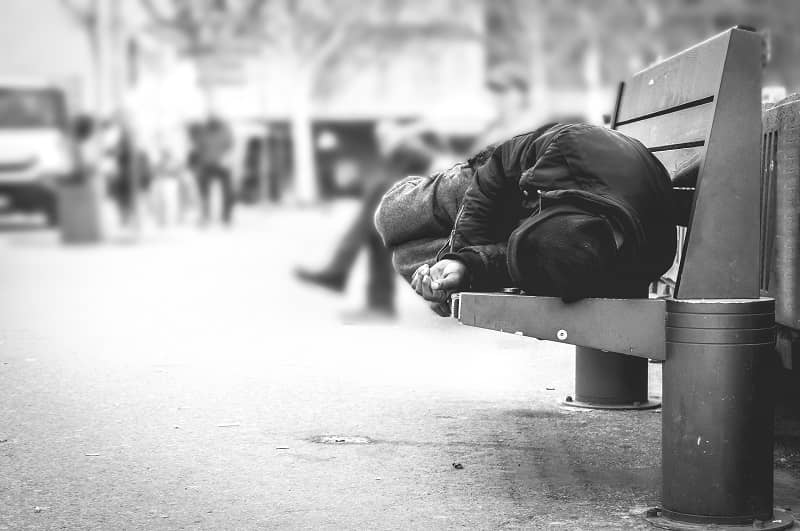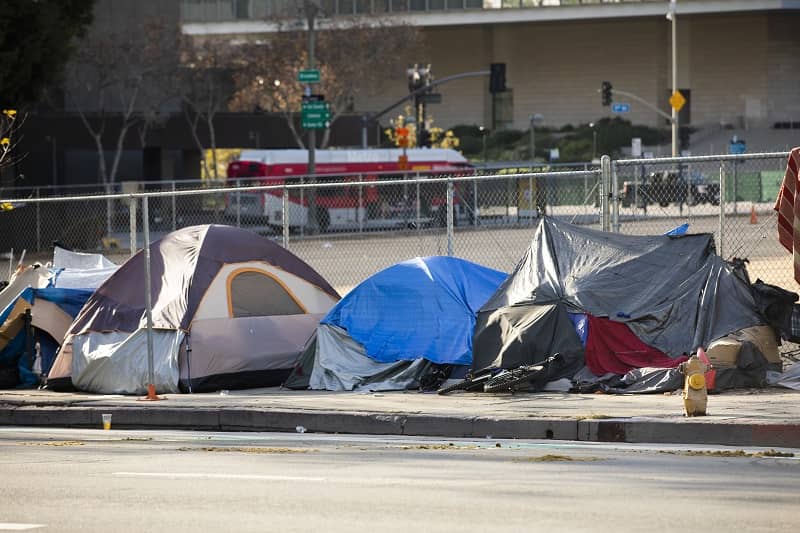He Had the Right Approach on Homelessness
By Eric Fruits, Ph.D.
Fewer than half of today’s Portlanders were here when John Elwood “Bud” Clark, Jr. was mayor. Even fewer remember him as one of the city’s last good mayors.
For many, he is best known as perhaps the only politician for whom the most famous photo of him doesn’t show his face—just the back of two skinny legs and an open trench coat.
For others, Clark, who died February 1st, was the purveyor of Portland’s best Reuben sandwich at his Goose Hollow Inn.
Oldtimers may remember his appearance on Johnny Carson’s Tonight Show, with Carson himself shouting out a “Whoop! Whoop!”
Despite the downtown homeless shelter that bears his name, Clark’s monumental efforts to address homelessness in Portland are largely forgotten or dismissed.
Portland always had a homeless population. In the 1940s, a group of University of Portland students started a fraternity called the Blanchet Club to serve food to the homeless and opened its House of Hospitality in 1952.
By 1968, an estimated 2,000 to 3,000 men were homeless in Multnomah County. The 1970s and 1980s “deinstitutionalization” policies moved many severely mentally ill individuals out of the state institutions. With nowhere else to go, those people ended up on the streets.
Early in Clark’s first term as mayor, crime and homelessness were a crisis in Portland. Under pressure from downtown businesses to address these issues—and facing a recall threat—Clark developed a “12-Point Plan for the Homeless,” which was endorsed by the City Council and the Multnomah County Commission.
The plan attracted national attention and can be summarized with three goals: reach out to those who want help, be firm with those who don’t and create an environment in which residents can feel safe and businesses can flourish.
One of the 12 points was called “Person Down,” in which Central City Concern’s CHIERS service would pick up anyone incapacitated by alcohol, drugs, illness or injury and take them to detox or medical assistance.
Another point was involuntary commitment of chronic CHIERS clients. This proposal would have required a change to the state’s involuntary commitment law, which has a very high threshold. To be involuntarily committed, a person must be an imminent danger to themselves or others or be unable to care for their basic needs. Efforts to change the state law failed under Clark and have failed in recent legislative sessions.
Clark left office at the end of 1992, and the incoming mayor, Vera Katz, did not have the same interest in addressing homelessness as her predecessor. Over her 12 years as mayor, efforts to implement Clark’s 12-point plan dissipated as she focused on several failed attempts to enact a “sit-lie” ordinance which would have prohibited sitting or lying on the sidewalk or in other public spaces.
After Katz left office in 2005, Portland and Multnomah County launched an ambitious project they described as a 10-year plan to end—yes, “end”—homelessness in the region. At the time, it was estimated that approximately 4,000 persons were experiencing homelessness on any given night.
Ten years after Clark unveiled his plan, homelessness was such a crisis that the Portland City Council declared a citywide housing emergency, which is now in its seventh year. Six months after the emergency declaration, Mayor Charlie Hales announced several drastic, and unpopular, policies. One of these was a “safe sleep” policy that allowed people to sleep on sidewalks and in city parks. Another allowed overnight parking for those sleeping in cars and RVs. The mayor also promised space for “organized camps” on city land and more temporary shelter space—a promise that has yet to be fulfilled.
Now, more than three decades after Clark rolled out his 12-point plan, Portland seems to have abandoned its key objectives. Efforts to reach out to those who want help are meager and ineffective. Today’s victimhood mentality means there’s little interest in being firm with those who resist help.
Improving public safety is now seen as quaint, if not pernicious and a tad racist.
Bud Clark was the rare politician who approached homelessness with practical compassion and an interest in preserving livability for all of the city’s residents. A return to his 12-point plan would be an effective first step and a tribute to his legacy.
Eric Fruits, Ph.D. is Vice President of Research at Cascade Policy Institute, Oregon’s free market public policy research organization. A version of this article published in the Portland Tribune on February 3, 2022.












